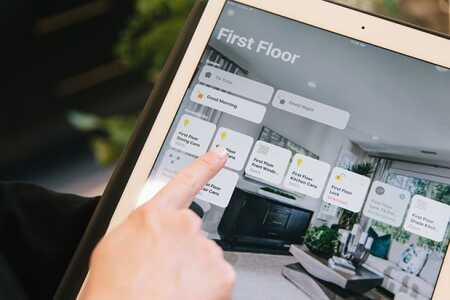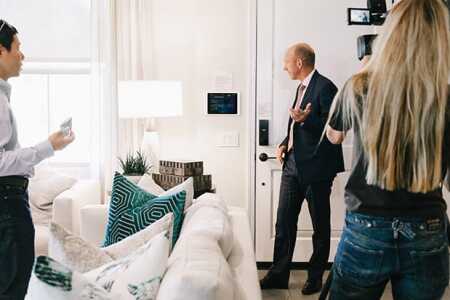Southern California’s strong job market for knowledge workers has also made it a prime proving ground for new smart home platforms that builders are rolling out as standard equipment in an increasing number of new homes.
While the smart home concept has been around for several years, until recently individual devices or apps didn’t talk to each other very well and typically required an expensive and laborious integration process to sync them. Ultimately, that restricted users to a defined set of components, says C.R. Herro, vice president of environmental affairs for Scottsdale, Arizona–based Meritage Homes.
ULI Fall Meeting: Full Conference Schedule | Who’s Attending
But advances in technology and connectivity along with the identification of best practices by a collaboration of IT firms, homebuilders, and home product companies are delivering smart home platforms that are more user friendly than ever. The systems operate on robust wi-fi coverage throughout the house, work seamlessly with a host of products, and link automatically to any internet-enabled household component, but also offer more control over energy and water use with timers and other settings.
Meritage, for example, recently introduced its M.ConnectedHome Automation Suite, a smart home platform that became available in its new homes sold in July. The standard package features connected door locks, garage doors, doorbells with embedded video cameras, light switches, thermostats, and irrigation systems. All are centered on providing security and convenience to homeowners and their families, Herro says.
The trick, he adds, is to ensure that a smart home does not block future innovations. Allowing users to operate M.ConnectedHome with Google, Apple, or other interfaces is one way that Meritage is addressing that challenge.
“What’s available today isn’t going to set the standard for the next five years—it’s the exact opposite,” he says. “So we’ve shifted from offering a package that solves all of your problems for today only, to providing a foundation that allows you to grow and adapt and change in any way you want to going forward.”
What might those future innovations be? For one, a refrigerator that can send a shopping list to a smartphone, Herro says. But more connected devices are noting daily habits and making predictions accordingly, he added, whether it is turning on lights around the usual time someone wakes or adjusting the thermostat around the time someone typically leaves for the day.
“Proactive service is not going to require a big, heavy interface,” he says. “It’s going to require less and be more adaptive to behavior patterns.”
In southern California, Meritage is building homes in its Everett at Five Knolls neighborhood in Santa Clarita and in the master-planned Rancho Mission Viejo community, among other developments.
Meanwhile, Canadian homebuilder Brookfield Residential is outfitting all of its new southern California homes with Apple HomeKit, beginning with the Delano neighborhood in Irvine’s Eastwood Village in Orange County. The platform is integrated into Apple’s iOS operating system, and new homeowners can use Apple’s Siri interface—or the Apple Home App on iPhone, iPad, or Apple Watch—to control connected devices. Communication between Apple HomeKit’s connected components is encrypted, and data are stored on the device instead of in the cloud.
Brookfield’s standard installation will control everyday items such as lights, locks, and thermostats. But users will be able to tweak the technology as Apple adds more connected home products to its roster, says Adrian Foley, Brookfield’s chief operating officer. While he acknowledged that to date Apple has a low number of connected product choices, Foley predicted that the situation would change dramatically in the coming months.
“We launched ourselves into connected home technologies and landed upon what we think is the platform that will give our customers the most joy and least problems,” he says. “We fully expect a couple hundred manufacturers to adapt their products to the Apple HomeKit platform.”
Foley says that the Delano homes were nearly ready for occupancy, and other southern California neighborhoods that Brookfield is bringing Apple HomeKit to include Flora, Prado, and Haciendas at Escaya in Chula Vista; Vientos, Candela, and Terracina at Rancho Tesoro in San Marcos; and Citrus in Palm at Rosedale in Azusa.
The effort to upgrade smart technology in new homes is taking place just a few years before California implements its “net zero” energy efficiency regulations, which will require new homes to generate as much power as they use. But smart home innovations are expected to play a critical role in California’s thrust for a net-zero world.
“I think consumers are more directly going to see the benefits of smart home technology as they relate to the convenience of remote access and the reduction in anxieties in regard to safety and security—knowing that the home can react to you no matter where you are,” Foley says. “But measuring the efficiency of a home or its energy performance is going to be key in the future, and these technologies are going to allow a lot of that measurement to take place accurately.”







